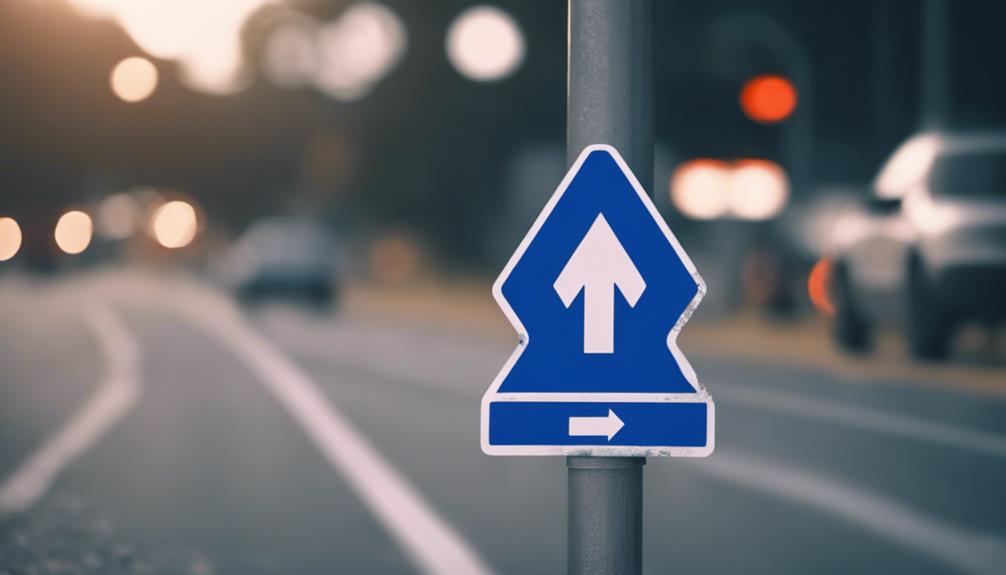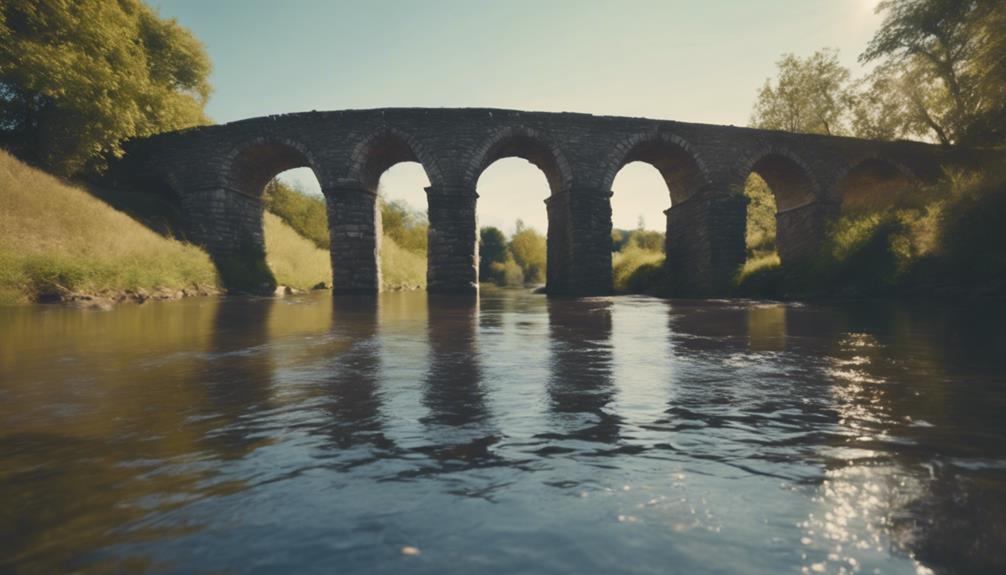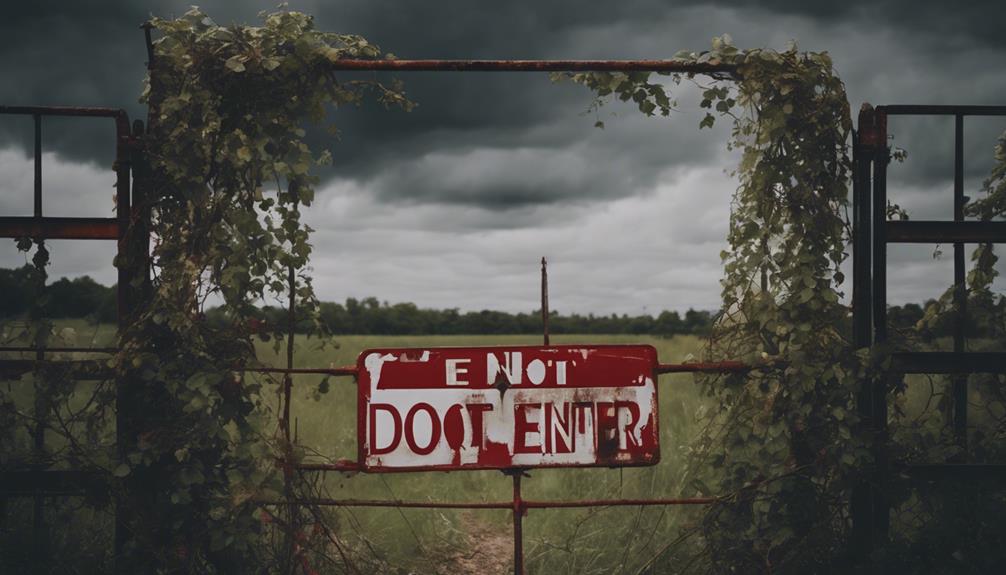Blue road signs, like the distinct blue ones, offer crucial tips about lane use, route directions, and services for safe driving. Circular blue signs show lane and route details. Rectangular ones offer directions and key info. They assist with emergency evacuations too. Blue signs, a standard in the USA, are key for route markers and safety. They guide to hospitals, restaurants, and gas stations. Blue signs guarantee clear, consistent info on highways and streets. Remember, blue signs play an essential role in keeping us safe and on track. **Discover more** about their meanings and importance!
Key Takeaways
- Blue road signs indicate essential services and tourist information.
- They offer directions to hospitals, restaurants, lodging, and gas stations.
- Blue signs mark evacuation routes for safety during emergencies.
- Circular blue signs provide lane guidance, while rectangular signs offer detailed directions.
- Blue signs on highways are standardized for consistency and safety.
Common Meanings of Blue Road Signs
Blue road signs commonly signify essential information related to road user services, tourist guidance, and evacuation routes. These signs are important for providing significant information to drivers, including where to find services, how to navigate through tourist areas, and the best routes for evacuation during emergencies.
The Manual on Uniform Traffic Control Devices (MUTCD) standardizes the use of blue traffic signs in the USA, ensuring consistency and clarity for all road users. Circular blue signs instruct drivers on lane or route usage, while rectangular signs offer directions and other key details. Issued by the USDOT's Federal Highway Administration (FHWA), these signs play a significant role in maintaining uniformity in roadway rules and regulations.
Blue road signs are also commonly used for route markers, motorist services, emergency notifications, private roads, and some city street names. Understanding the meanings of these blue traffic signs is essential for safe and efficient navigation on the roads.
Services and Facilities Signage

Blue road signs for services and facilities come in various types, each with specific symbol meanings and location indications.
These signs are essential for helping drivers identify the services available nearby as they travel.
Understanding the types of services, the symbols used, and how to interpret their locations can assist drivers in planning their journeys effectively.
Types of Services
On traveling roads, one encounters a variety of services and facilities signaled by blue road signs. These signs play an important role in guiding road users towards essential amenities and information. Blue road signs commonly indicate road user services, tourist information, evacuation routes, and guidance information.
They may point towards hospitals, restaurants, lodging accommodations, tent camping areas, and gas stations ahead. Additionally, these signs direct drivers to motorist services, recreational areas, and emergency notification information. You can spot blue road signs on country roads, private streets, highway entrances/exits, and even some city street names.
In cities like Los Angeles, blue street signs are used to mark private drives or roadways through private property for safety and navigation purposes.
Symbol Meanings
When traveling on roadways, various symbols on blue road signs convey essential meanings regarding services and facilities available to travelers. These symbols are designed to be easily recognizable and informative, even across language barriers. The blue background and white lettering on these signs indicate specific services and facilities to assist drivers on their journeys.
To understand these symbols better, consider the following:
- Circular blue signs instruct on lane or route usage.
- Rectangular blue signs provide directions and other important information.
- Blue signs are standardized by the Manual on Uniform Traffic Control Devices for Streets and Highways (MUTCD).
- Blue signs commonly indicate road user services, tourist information, evacuation routes, route markers, motorist services, and emergency notifications.
Location Indications
Traversing roadways becomes more important with the assistance of location indications found on blue road signs, guiding drivers to essential services and facilities along their journey. Blue signs are standardized by the Manual on Uniform Traffic Control Devices (MUTCD) to guarantee consistency across the US. These signs point towards road user services like gas stations, lodging, and parking areas, providing valuable information to drivers. They also offer tourist information, directing travelers to recreational spots and other attractions. Blue road signs play a vital role in helping road users find necessary amenities efficiently. Below is a table showcasing the types of facilities and services that blue road signs commonly indicate:
| Location Indications | Information |
|---|---|
| Gas Stations | Lodging |
| Parking Areas | Recreational Spots |
Evacuation Route Identification

Getting through emergencies becomes more manageable when drivers pay attention to the blue road signs indicating evacuation routes. Here are four key points to help you understand the importance of evacuation route identification:
- Critical Information: Blue road signs with evacuation route symbols offer vital guidance during emergencies, ensuring drivers follow designated routes for safety.
- Efficient Direction: Evacuation route identification assists authorities and residents in efficiently finding their way to secure locations when disasters strike.
- Standardization: Blue signs with evacuation route symbols are standardized to provide clear and consistent guidance across different areas, promoting safety and uniformity.
- Lifesaving Measures: Understanding and following blue road signs for evacuation routes can save lives and prevent chaos during emergencies, emphasizing the significance of adhering to these designated paths.
Blue Signs in Different States
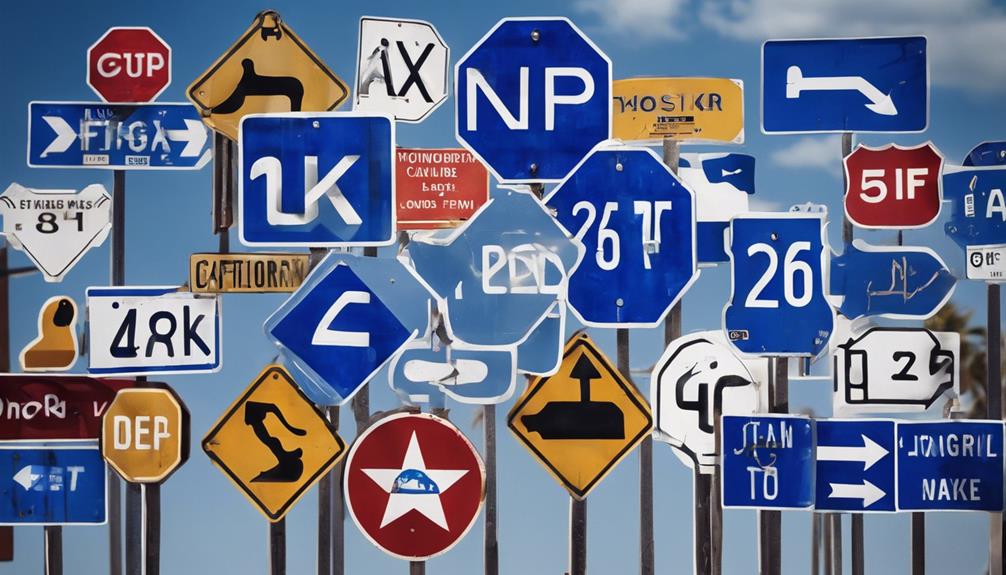
Blue road signs in various states serve multiple purposes, such as indicating road user services, tourist information, or evacuation routes. These signs follow standardized guidelines outlined by the Manual on Uniform Traffic Control Devices. They're essential for providing important information to motorists across the country.
In Texas, blue signs are used for Tourist-Oriented Directional Signs, helping travelers find rural businesses. Additionally, blue signs are also utilized to mark private roads in some cities, which aren't under county jurisdiction. This helps drivers understand the ownership and jurisdiction of the roads they're traveling on.
Blue signs aren't only limited to state boundaries but are consistent in their use for route markers, motorist services, and emergency notifications. Understanding the significance of blue road signs in different states is crucial for all road users to navigate safely and efficiently.
Blue Road Signs in Urban Areas
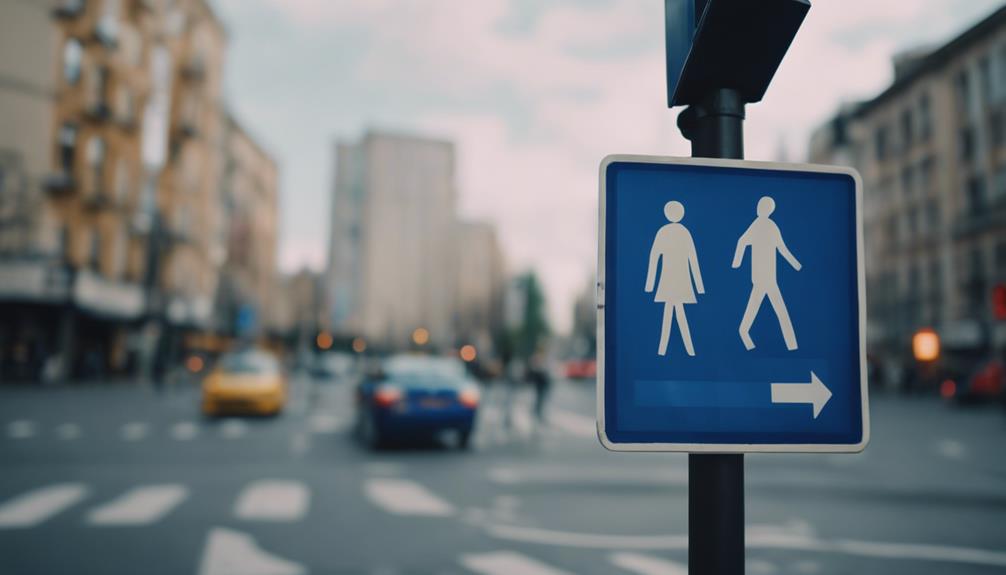
Getting around urban areas becomes more manageable with the guidance provided by blue road signs indicating essential services and directions. Here are four ways blue road signs in urban areas help us navigate efficiently:
- Tourist Information: Blue signs in cities often point out tourist information centers, helping visitors find maps, brochures, and guidance on local attractions.
- Road User Services: These signs direct road users to services like tow truck stations, mechanics, and car rental facilities for any vehicular needs.
- Evacuation Routes: In case of emergencies, blue road signs display evacuation routes, ensuring residents can quickly and safely leave the area if necessary.
- Parking Facilities: Blue signs guide drivers to parking lots or structures, reducing the stress of finding a place to park in bustling city environments.
Understanding the significance of blue road signs is important for both residents and visitors to navigate urban areas safely and effectively.
Significance of Blue Street Signs
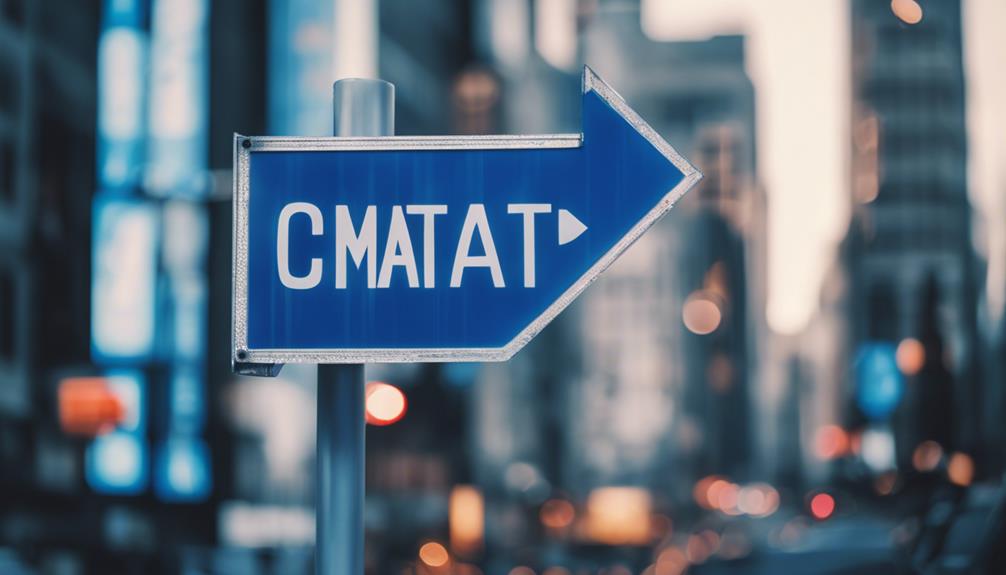
Blue street signs, like their green counterparts, hold specific meanings for road users. They often convey valuable information about services, tourist spots, and evacuation routes.
Understanding the significance of blue street signs can enhance our road awareness and safety.
Symbolism of Blue
Upon observing blue street signs while traveling on roadways, the significance of this color becomes apparent in indicating road user services, tourist information, and evacuation routes.
- Blue signs serve as beacons for road user services, offering assistance and guidance along the way.
- They provide essential tourist information, highlighting points of interest and attractions nearby.
- Blue signs act as important markers for evacuation routes, ensuring safe passage during emergencies.
- These standardized signs, regulated by the MUTCD, offer lane guidance through circular signs and detailed directions through rectangular ones, enhancing road safety and efficiency.
Meaning on Highways
Traversing highways becomes simplified with the distinct blue street signs that offer clear guidance on road user services, tourist information, and evacuation routes for drivers. Circular blue signs provide lane or route instructions, while rectangular ones offer directions and essential details.
These blue signs on highways are standardized by the Manual on Uniform Traffic Control Devices for Streets and Highways (MUTCD) to guarantee consistency and clarity for all road users. Issued by the USDOT's Federal Highway Administration (FHWA), these signs aim to standardize roadway and traffic rules across the United States.
Blue street signs on highways serve various purposes such as route markers, traffic guidance, motorist services, emergency notifications, private streets, highway entrances/exits, and some city street names, ensuring a uniform and standardized experience for drivers nationwide.
Safety and Efficiency on the Road
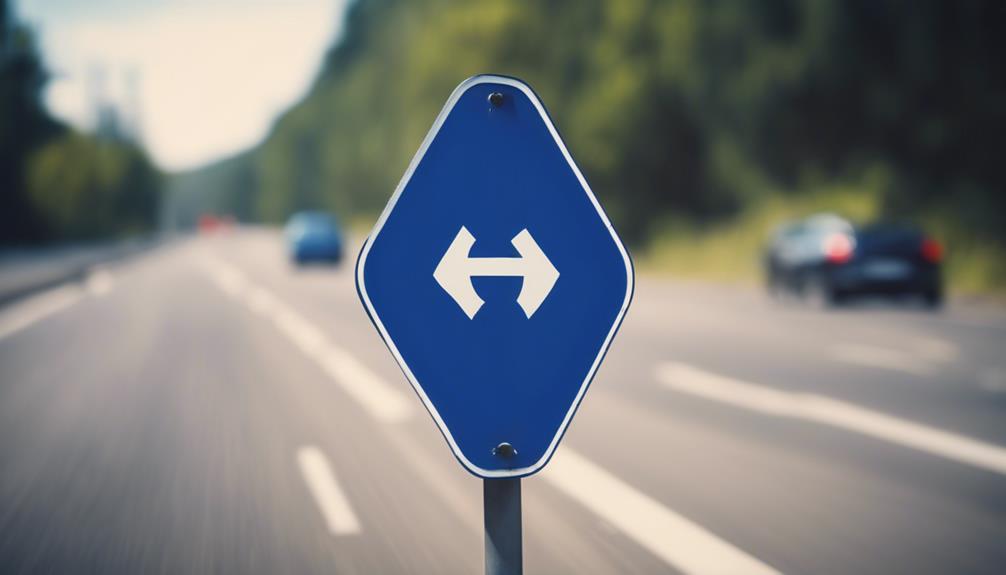
Ensuring safety and efficiency on the road is paramount for all drivers and passengers. When it comes to blue road signs, understanding their significance contributes to a smoother and safer journey. Here are four key points to ponder:
- Guidance for Road User Services: Blue signs play a vital role in directing drivers towards essential services such as gas stations, rest areas, hospitals, and hotels, guaranteeing road users have access to necessary amenities during their travels.
- Enhanced Safety Measures: Blue road signs also indicate evacuation routes in case of emergencies, providing a clear path to safety for drivers and passengers. This proactive approach helps mitigate risks and ensures a swift response during critical situations.
- Efficiency in Navigation: By following blue signs that offer directions and important information, drivers can effectively navigate unfamiliar roads, reduce travel time, and make informed decisions while on the move.
- Standardized System: The use of blue road signs follows strict guidelines set by the Manual on Uniform Traffic Control Devices for Streets and Highways (MUTCD), promoting consistency and clarity across all roadways for the benefit of all road users.
Frequently Asked Questions
What Does Blue Street Signs Mean?
Blue street signs in Los Angeles typically indicate private drives or roadways through private property. They were introduced in 1939 for better readability and are still designed by the Bureau of Engineering.
In some cities, blue street signs denote private roads not managed by counties. Used in large parking lots, event venues, and private property for safety, these signs serve to differentiate private roads from public ones for clarity and control.
What Do Round Blue Road Signs Mean?
Round blue road signs provide necessary instructions or important information for drivers on the road. These signs are vital for guiding us on specific lane usage and traffic rules.
It's important to pay close attention to these signs as they're standardized to guarantee uniformity and safety. Remember, following round blue road signs helps us navigate traffic effectively and stay informed about regulations on the road.
What Do the Different Color Road Signs Mean?
Blue road signs come in various colors, each with specific meanings. Understanding these colors is important for safe driving.
Red signs typically indicate prohibitions or warnings. Yellow signs are for general warnings or cautions. White signs provide regulatory information like speed limits. Green signs direct you to highways or interstates. Brown signs indicate recreational areas. Finally, blue signs often signify road user services, tourist information, or evacuation routes.
Remembering these distinctions helps drivers navigate effectively.
What Are Examples of Blue Road Signs?
Blue road signs encompass various types such as route markers, motorist services, and emergency notifications. These signs offer important information for road users, aiding in navigation and safety.
In the USA, blue signs can signify route markers, services, private roads, and specific street names. Understanding the meaning and significance of these signs is essential for safe and efficient travel on roadways.
What Does the Blue Color Symbolize on Road Signs?
The color blue on road signs generally indicates that a driver should be prepared for a specific type of roadway information, such as guidance, services, or tourist information. It can also be used to identify parking spaces for disabled individuals. The meaning of 14k gs gold color has no association with road signs.
Conclusion
To sum up, blue road signs typically indicate services, facilities, or evacuation routes. It's crucial to pay attention to these signs while driving to guarantee safety and efficiency on the road.
Remember, knowing the meanings of different road signs can help you navigate your way better. So, next time you see a blue road sign, ask yourself: 'Do I know what this sign means?'
Stay informed and stay safe on the road!

